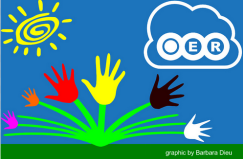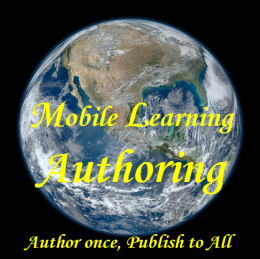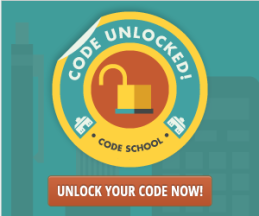This year(2011) marks a shift in the way that educators are thinking about online learning, several states have passed laws that will affect the way that virtual education operates in those states. This is a blog post about blended learning from our guest blogger : Robert Williams. Thanks, Robert.
*****
Change though is hard to adapt to, yet lays the major platform instilling organizational growth and making way for implementing innovations and new ideas. Well, keeping in mind the idea that welcomes change, the education sector has already evolved through three stages of transformation receiving new ideas promoting a better learning experience. From the days of face-to-face learning to distance learning based on web technologies, and now blended learning, the one that combines face-to face learning and online learning seamlessly, change has been throughout constant.
However, what you cannot ignore is that each time, the change welcomed new dimensions to education that twisted the learning approach adapted in schools, colleges, and universities completely. Well, the change that led to a revolution in the educational sector enjoys a great support of the technological revolution too. The rapid development of Internet technology and the digital dominance have initiated an increasing number of k 12 schools and higher educational institutes to adopt the model promoting a combined approach to learning.
K12 schools that witnessed a slow pace in comparison to other higher educational institutes in implementing technology in learning has now switched to the world of blended learning with greater ease and efficiency. Well, combining factors like, budget constraints, lack of teacher support, and decreasing range of courses, matching with the ever-growing need of performances have owed to the adaptability of the educational mode that combines face-to-face learning and distance learning approaches. According to recent reports, the number of students benefitting from this advanced approach of learning in U.S.A has risen to three million.
While, the prospects of implementing blended learning in k12 schools is on a progression, Michael Horn has broken down the learning approach in six models –
• Self-Blend model – students support their traditional learning with online classes.
• Face-to-Face Driver – integrates classroom learning and online support simultaneously
• Online Lab – this approach focuses on online learning amid a traditional setting managed by supervisors.
• Rotational Model – the students spins through traditional classroom learning and online learning support within restricted class hours.
• Flex model – Designed for credit recovery program and dropouts, this one delivers distance-learning program over the web with on site teacher support.
The Chicago Virtual Charter School is a program designed by the Chicago Schools to implement a unique blend of traditional learning system with online learning, the natural extension to distance learning.
The scenario of implementation of blended learning in education is on bright and improving prospects with the higher education learning institutes. The learning mode that combines face-to-face education with distance learning approach carried over the web is witnessing a steady adaptation among higher education department. The combined approach to learning has been blend in educational institutes worldwide in different formats. Here is a look at the current practices –
• Hong Kong Institute of Education – implemented blended learning in English department via diverse approaches. The Blackboard online learning management system has been approved as the major platform for delivering knowledge through the learning approach. It introduced Wikibook projects that allowed students to work in groups produce an academic textbook together online.
• University of the Witwatersrand in South Africa – introduced undergraduate psychology courses adopting the approach of blended learning. The courses alongside delivering traditional teaching also included a site featuring lecture-by-lecture notes and model question and answer for tests and assignments along with posting student assignment marks.
In addition to the above-mentioned institutes, University of Tennessee, Stanford University, MIT, Oxford, University College of London, Ericsson Education, and many others have developed a platform of blended learning by taking the approach of combining synchronous and asynchronous learning.
The student’s feedback on the approach of blended learning suggests that the learning mode offered them the feel of being in connection with the teachers and the course 24*7. The combination of face-to-face learning and distance learning approach made it possible to deliver information and other important course related information easily within a geographically separated class.
If such a meteoric rise of blended learning and its implementation in K-12 schools and higher education sector across the world is surprising you, have a quick look at the following site links that validate the rise of this particular mode of convergence learning.
http://www.districtadministration.com/article/building-blended-learning-program
http://www.districtadministration.com/article/key-considerations-blended-learning
http://www.forbes.com/sites/michaelhorn/2011/01/27/the-rise-of-k-12-blended-learning/
http://www.igi-global.com/chapter/comparative-blended-learning-practices-environments/38068
Click to access NACOL_PP-BlendedLearning-lr.pdf
*****
Author Bio – Robert Williams driven by his passion towards writing develops the interest to write on distance learning and its advancing prospects in the face of change. Here, he discusses on the practices of blended learning in K 12 education and higher education.

(Image from Participatory Learning, licensed under creative commons)
NOTE : The eighth annual Keeping Pace with K-12 Online Learning, was just released at the Virtual School Symposium in Indianapolis, finds that single-district online programs—many of which include blended learning—are the fastest-growing segment of online education this year. (Single-district online programs are created by a district for the students in that district only.) This year marks a shift in the way that educators are thinking about online learning, several states have passed laws that will affect the way that virtual education operates in those states. The Keeping Pace report also includes state profiles of virtual learning initiatives, definitions of online learning terms, as well as an entire section that defines and explains blended learning. There is also a breakdown of key policy issues, such as funding, demographics of online students, accreditation, pre-service online teacher training, and online learning graduation requirements. The report can be downloaded for free from the Keeping Pace website. (information from Education Week)
Online and Blended Learning: A Survey of Policy and Practice of K-12 Schools Around the Worldis, case studies and other reports are available online at the iNACOL Online Bookstore:http://www.inacol.org/research/bookstore/index.php









Your thoughts?